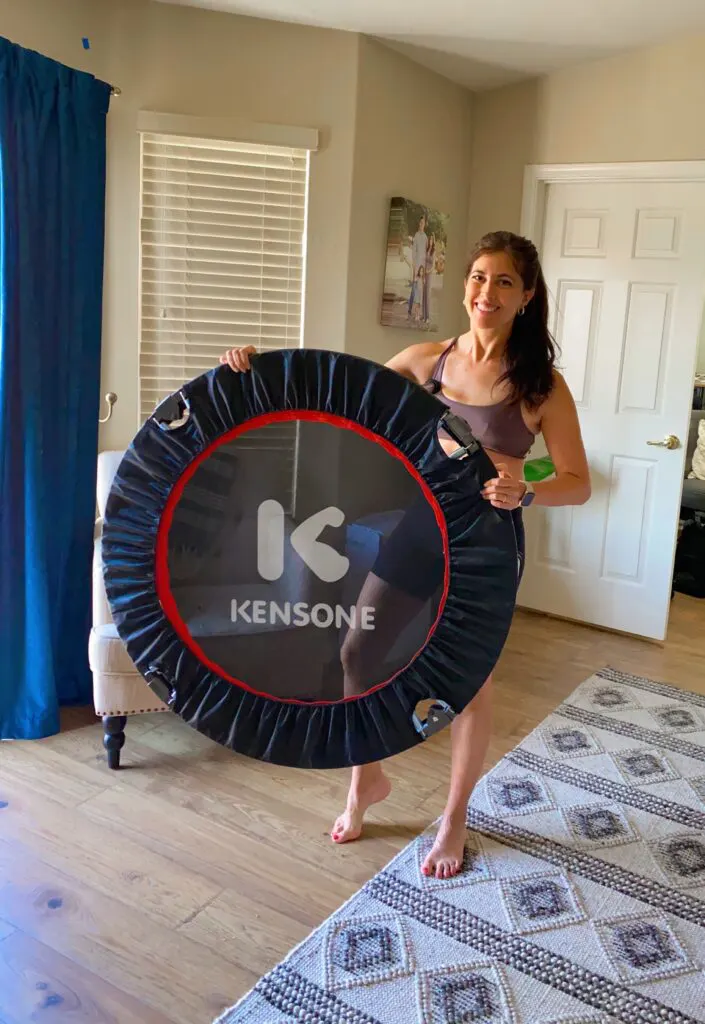Discover the Exciting World of Rebounding: A Fun Addition to Your Wellness Routine
Welcome, friends! As I prepare for my upcoming adventure in Hawaii, I wanted to take a moment to share one of my favorite wellness activities: rebounding. If you’re curious about this unique form of exercise, read on to learn more about its benefits and how you can incorporate it into your daily routine.
Rebounding is all about bouncing on a mini-trampoline, known as a rebounder. It’s a low-impact workout that offers a host of benefits for your body and mind. From improving muscle tone to boosting cardiovascular health, rebounding is a fun and effective way to stay active. Plus, it’s suitable for people of all ages and fitness levels.
(Ready to get started? Check out my favorite rebounder here!)
Why Rebounding Rocks
Unveiling the Magic of Rebounding
Did you know that NASA astronauts use rebounding to regain bone density and muscle mass after space missions? This exercise isn’t just fun; it’s also incredibly effective. The up-and-down motion of bouncing on a trampoline provides a unique workout experience that’s 68% more efficient than jogging. Whether you’re looking to strengthen your muscles or improve your balance, rebounding has you covered.
The Amazing Benefits of Rebounding
1. Boosts Cardiovascular Health
Get your heart pumping with rebounding! This aerobic exercise enhances heart function, improves circulation, and helps lower blood pressure. By incorporating rebounding into your routine, you can enhance your cardiovascular endurance and make everyday activities a breeze.
2. Supports the Lymphatic System
Rebounding stimulates lymphatic flow, aiding in detoxification and bolstering your immune system. Unlike your cardiovascular system, your lymphatic system relies on movement to function effectively. Rebounding helps flush out toxins and waste products, giving your immune system a much-needed boost.
3. Gentle on Joints
Say goodbye to joint pain with rebounding. The trampoline mat absorbs much of the impact, reducing stress on your knees, hips, and spine. This makes rebounding an ideal exercise for individuals with arthritis or those recovering from injuries.
4. Improves Balance and Coordination
Challenge your body with the unstable surface of a rebounder. By improving your balance and coordination, you can enhance proprioception and neuromuscular coordination, reducing the risk of falls and enhancing your overall fitness.
5. Tones Muscles
Engage multiple muscle groups with each bounce on the trampoline. From your core to your legs and glutes, rebounding provides a full-body workout that sculpts and strengthens your muscles. It’s the perfect way to achieve that toned physique you’ve always wanted.
6. Boosts Mental Wellbeing
Experience the mood-boosting effects of rebounding. This rhythmic exercise releases endorphins, your body’s natural mood elevators, helping to reduce stress and anxiety. As you bounce away, you’ll find yourself feeling more relaxed and energized.
( )
)
(Ready to bounce your way to better health? Get your rebounder here!)
Integrating Rebounding into Your Wellness Routine
Getting Started: Begin with short sessions (5-10 minutes) and gradually increase the duration as your body adjusts to the movement.
Warm-Up: Always start with a gentle warm-up to prepare your muscles and joints for the workout.
Vary Your Workout: Mix up your routine with different movements to keep things interesting and target various muscle groups.
Stay Consistent: Aim for 3-4 sessions per week to maximize the benefits of rebounding.
Listen to Your Body: Pay attention to how your body feels and adjust your workout intensity accordingly.
The Upside and Downside of Rebounding
Pros:
– A fun and enjoyable workout that feels more like play than exercise.
– Can be done at home with minimal equipment.
– Suitable for all fitness levels.
– Supports cardiovascular and lymphatic health.
– Gentle on joints, making it ideal for individuals with joint concerns.
Cons:
– Requires space for a rebounder.
– May not be suitable for individuals with certain health conditions (consult a doctor first).
– Initial cost of purchasing a quality rebounder.
Caring for Your Pelvic Floor
While rebounding is generally low-impact, it’s essential to protect your pelvic floor health. Here are some tips to keep in mind:
Start Slowly: Ease into rebounding with gentle bounces to allow your pelvic floor to adapt.
Engage Your Core: Focus on strengthening your core muscles to support your pelvic floor during rebounding.
Seek Advice: If you have pelvic floor issues, consult with a specialist before starting rebounding.
Choosing the Right Rebounder
Quality and Durability: Invest in a rebounder that can withstand regular use.
Safety Features: Look for non-slip surfaces and sturdy frames for added safety.
Comfortable Mat: Ensure the mat provides sufficient cushioning for a comfortable bounce.
Weight Capacity: Check the weight limit to ensure it meets your needs.
Foldable Design: Opt for a rebounder that can be easily stored, especially in smaller spaces.
Remember:
Always consult with a healthcare professional before starting any new exercise routine, especially if you have pre-existing health conditions. Rebounding should be done mindfully and with proper technique to avoid injury.
Embrace the joy of rebounding and take your wellness routine to new heights. Start slowly, listen to your body, and reap the countless benefits of this exciting form of exercise. Have you tried rebounding before? Is it something you’d like to incorporate into your fitness routine? Share your thoughts with me!
With love,
Gina













